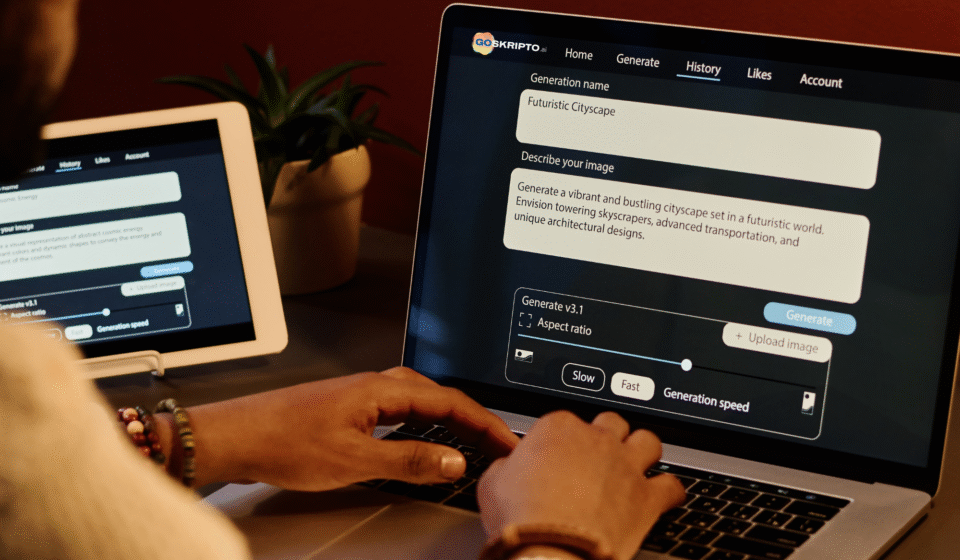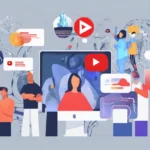
AI-Powered World-Building: How Generative AI Creates Unique Universes for Films, Games, and Books
In This Post ...
- Ever Wondered Who Designs the Next Hogwarts or Westeros?
- What You’ll Learn
- How Generative AI Powers World-Building
- 1. Generating Maps and Landscapes
- 2. Crafting Cultures, Lore, and Histories
- 3. Creating Characters with Context
- 4. Language and Dialogue Generation
- 5. Visual World Prototypes
- Real-World Applications
- Will AI Replace Creative World-Builders?
- How to Get Started with AI World-Building
- Summary: The Future is Built Together
Ever Wondered Who Designs the Next Hogwarts or Westeros?
Imagine conjuring up an entire fantasy realm—its landscapes, cultures, histories, and even languages—in just a few clicks. Sounds magical, right? That magic is now real, thanks to generative AI.
In today’s storytelling world, world-building is everything. Whether you’re crafting a sci-fi epic, designing an immersive game, or writing a fantasy novel, the universe your story lives in plays a huge role. This blog explores how generative AI is revolutionizing world-building, helping creators construct rich, believable, and engaging universes faster than ever before.
What You’ll Learn
By the end of this blog, you’ll understand:
- How AI helps build story worlds from scratch
- Tools and techniques used by writers, game designers, and filmmakers
- The benefits and limitations of AI in creative development
How Generative AI Powers World-Building
1. Generating Maps and Landscapes
AI tools can instantly generate terrain maps, city layouts, and fantasy geographies. Writers and developers can visualize the setting before writing the first scene or designing the first level.
2. Crafting Cultures, Lore, and Histories
Generative AI can help develop complex societies, belief systems, political structures, and historical timelines, adding depth and realism to fictional universes.
3. Creating Characters with Context
Beyond names and traits, AI can link characters to events, regions, and other characters—creating intricate webs of relationships within a fictional universe.
4. Language and Dialogue Generation
AI models can invent entirely new languages or dialects, as well as region-specific slang or speech patterns—ideal for adding authenticity to fantasy or sci-fi settings.
5. Visual World Prototypes
Some platforms generate AI art or visual boards based on textual descriptions. This is especially useful for mood boards, pitch decks, and transmedia storytelling.
Real-World Applications
- Filmmaking: AI is used to pre-visualize scenes and design environments (think futuristic cities or alien worlds).
- Gaming: Studios use AI to build expansive open worlds filled with procedurally generated quests, ecosystems, and lore.
- Publishing: Authors can co-create rich story backgrounds, reducing world-building time and enhancing consistency.
Will AI Replace Creative World-Builders?
Not at all. AI provides the scaffolding, but creativity still drives the vision. Human creators add nuance, emotion, and originality. Think of AI as your creative architect—it builds the structure, but you furnish the soul.
How to Get Started with AI World-Building
- Explore platforms like GoSkripto for AI-generated visual boards and story universe tools.
- Try tools like ChatGPT, MidJourney, or Artbreeder for lore, visuals, and characters.
- Build gradually: Start with one element—like a map or a city—and expand with AI suggestions.
Summary: The Future is Built Together
Generative AI is transforming the creative process by making world-building more efficient, dynamic, and inspiring. By embracing these tools, creators can bring their imagined universes to life with speed and precision.
Ready to Build Your World? Share your experience using AI in world-building in the comments below, or download our free guide to explore the best tools for storytellers.






